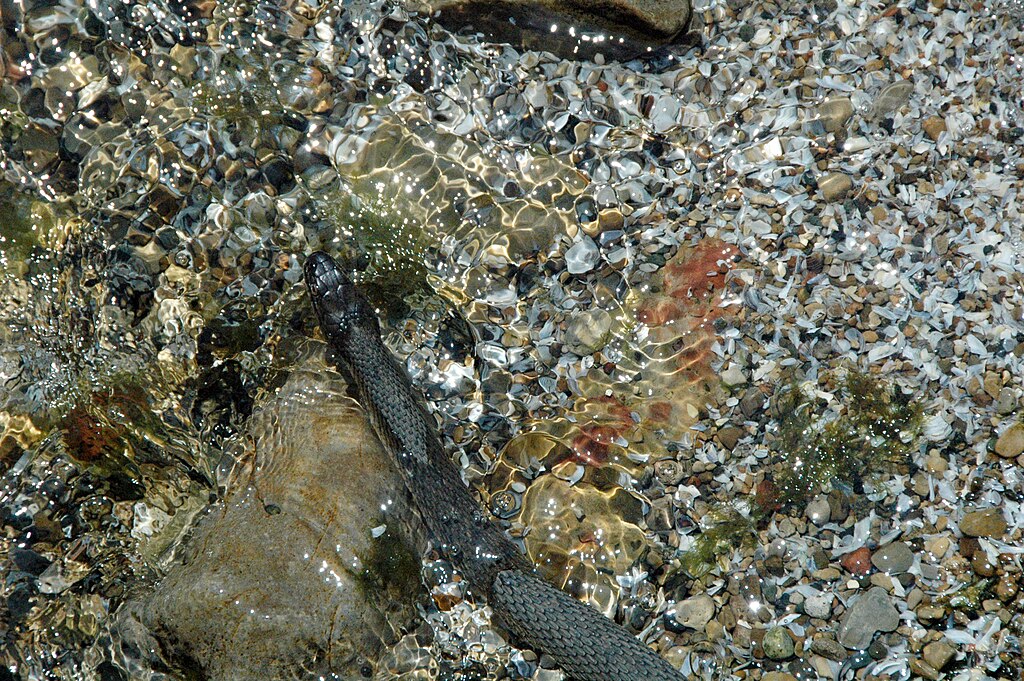Most snakes shed their skin on land, leaving behind a ghostly, translucent replica of themselves among rocks, branches, or forest debris. However, one remarkable serpent breaks this universal rule. The Lake Erie Water Snake (Nerodia sipedon insularum), a subspecies of the Northern Water Snake, has evolved a unique shedding behavior that occurs primarily in water. This aquatic exfoliation represents a fascinating evolutionary adaptation and offers a glimpse into how environmental pressures can shape even the most fundamental biological processes. Join us as we dive beneath the surface to explore this exceptional reptile and its remarkable aquatic shedding behavior that sets it apart in the snake world.
The Basics of Snake Shedding
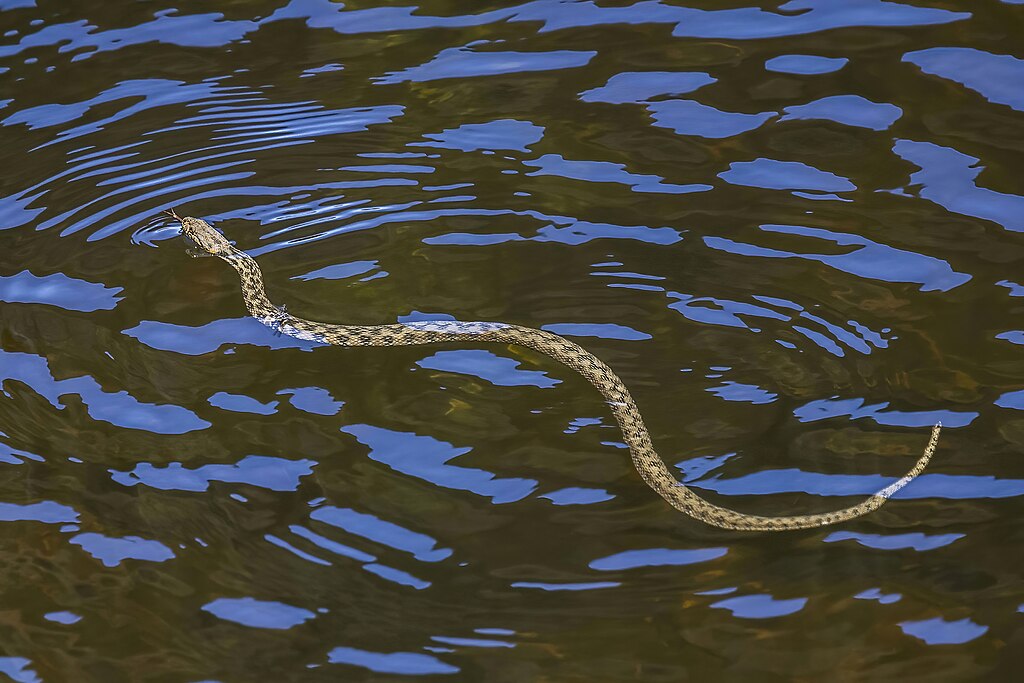
Snake shedding, scientifically known as ecdysis, is a natural process where snakes periodically shed their old skin to allow for growth and remove parasites. During this process, snakes secrete a fluid between the old and new skin layers, helping to separate them before the snake physically rubs against rough surfaces to initiate the shed. Most terrestrial snakes find a secure, hidden location with textured surfaces like rocks or logs to help them grip and pull away from their old skin. The entire shedding process typically takes several days to complete, beginning with the dulling of the snake’s appearance and clouding of the eyes as the new skin forms underneath the old one. This universal reptilian process is generally similar across most snake species – with the Lake Erie Water Snake being a notable exception.
Meet the Lake Erie Water Snake
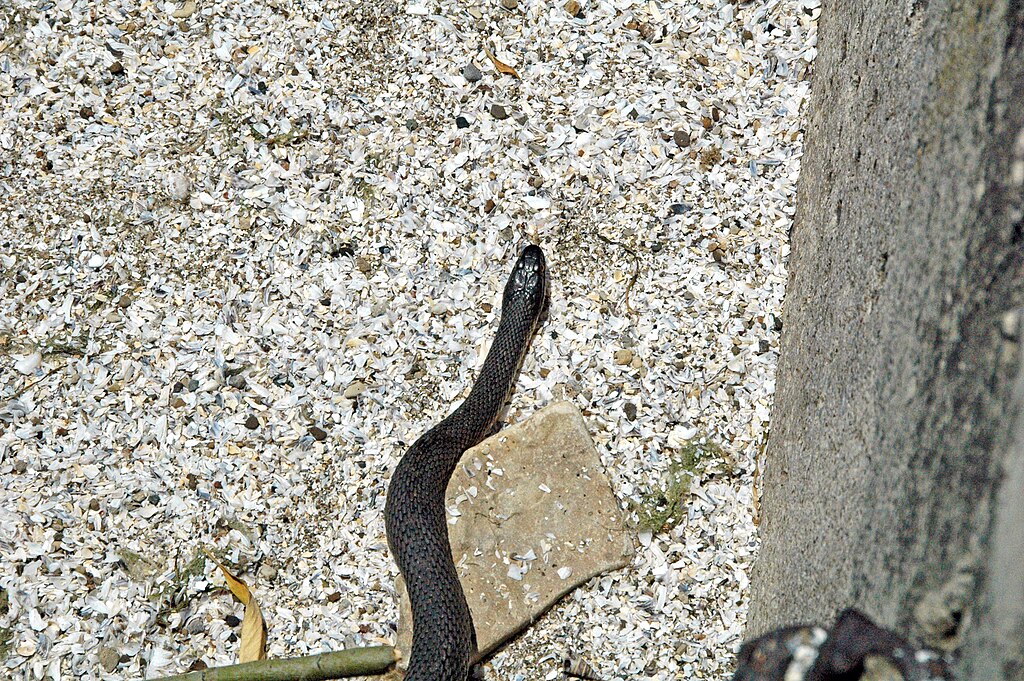
The Lake Erie Water Snake (Nerodia sipedon insularum) is a non-venomous colubrid snake endemic to the islands of western Lake Erie in North America. Growing to an average length of 1.5 to 3.5 feet, these snakes display remarkable color variations ranging from banded patterns of gray, brown, and rusty red to nearly uniform gray coloration, which helps them blend into their rocky shoreline habitats. As a subspecies of the Northern Water Snake, they are excellent swimmers with specialized adaptations for aquatic life, including eyes and nostrils positioned on top of their heads to allow breathing while mostly submerged. Their diet consists primarily of small fish and amphibians, which they hunt in the shallow waters around the lake’s islands. Once endangered due to habitat loss and human persecution, Lake Erie Water Snakes have made a remarkable recovery and were removed from the federal endangered species list in 2011.
The Unique Aquatic Shedding Behavior
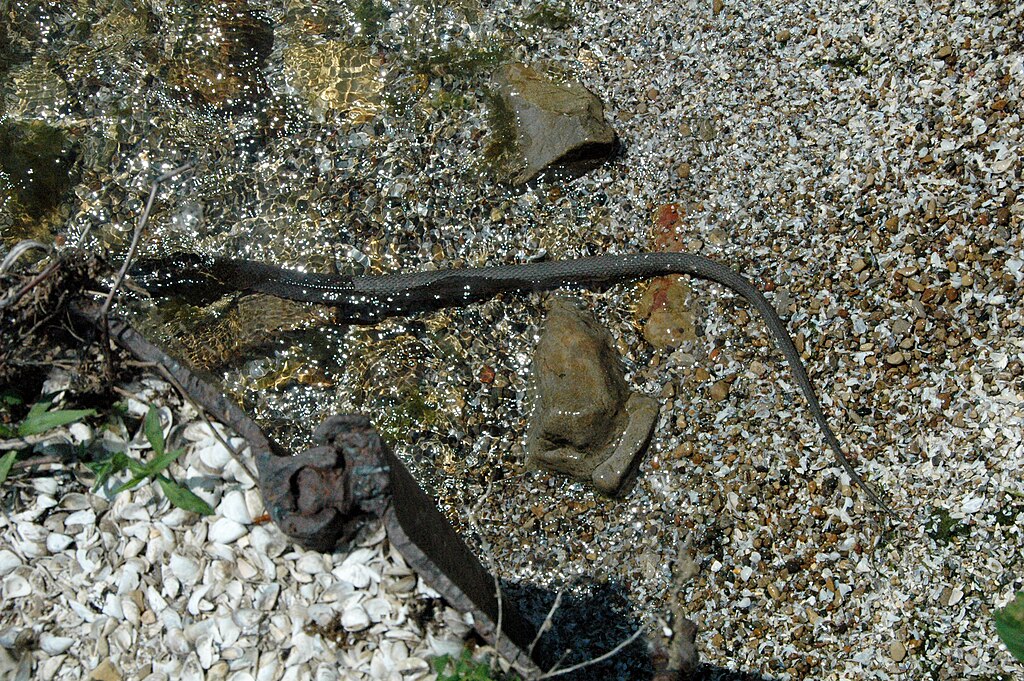
Unlike their terrestrial counterparts, Lake Erie Water Snakes have developed the remarkable ability to shed their skin while swimming. This process begins similarly to land snakes, with the skin loosening around the head region, but instead of finding rough surfaces on land, these snakes take to the water to complete the process. While submerged, they perform sinuous, undulating movements through aquatic vegetation or around submerged rocks, using water resistance to help peel away the old skin. This aquatic shedding behavior offers distinct advantages in their island environment, where suitable terrestrial shedding sites may be limited and predation risk on land is high. Researchers observing this behavior have noted that water-based shedding appears to proceed more quickly than terrestrial shedding, with the entire process sometimes completing in a single swimming session.
Evolutionary Adaptations Behind Aquatic Shedding
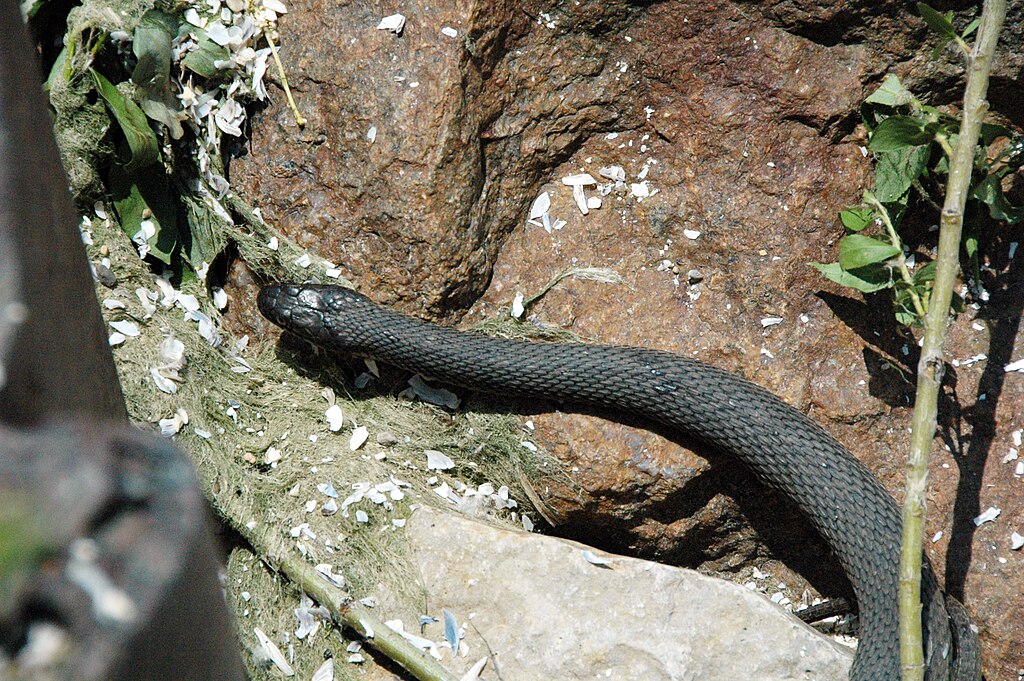
The evolution of water-based shedding represents a specialized adaptation to the Lake Erie Water Snake’s unique island habitat. Scientists believe this behavior developed as a response to multiple environmental pressures, including limited suitable terrestrial habitat on the small Lake Erie islands and high predation risk during the vulnerable shedding period. Water provides both a medium for physical resistance needed to remove the old skin and protection from land-based predators during this vulnerable time. Additionally, the Lake Erie islands feature rocky shorelines with few hiding places on land, making underwater shedding a logical evolutionary solution. This adaptation demonstrates the principle of natural selection, where individuals with traits that provide survival advantages gradually become more common in the population, leading to the widespread adoption of this unusual shedding behavior.
The Role of Hydration in Shedding
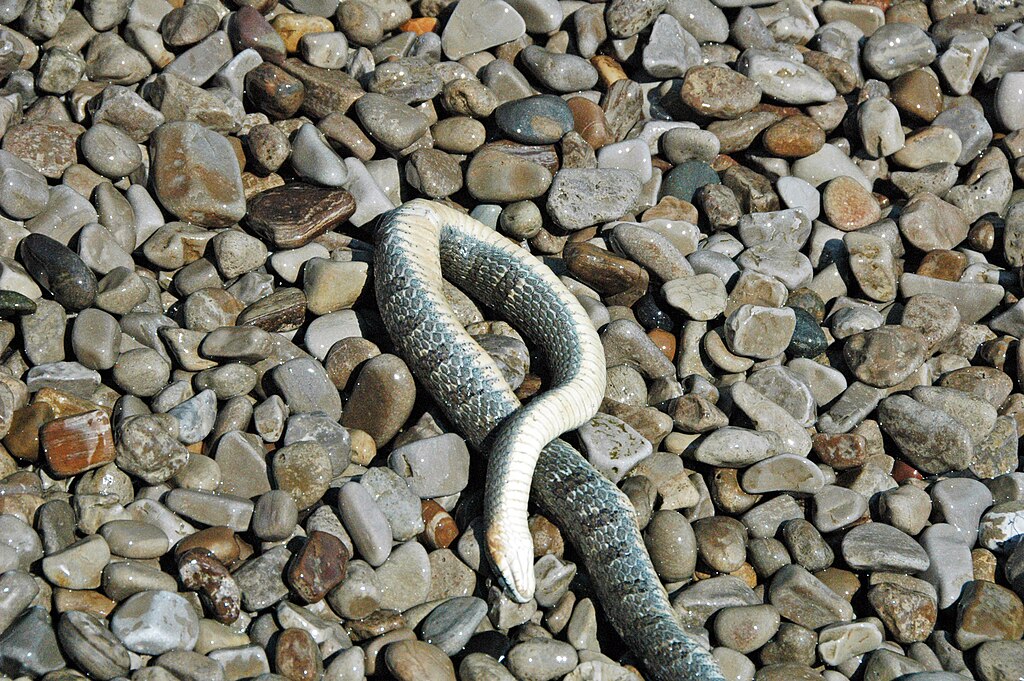
Water plays a crucial role in the shedding process for all snakes, but especially for the Lake Erie Water Snake. Proper hydration is essential for successful ecdysis, as it helps create the separation between old and new skin layers and facilitates the physical removal of the shed. For terrestrial snakes, this often means seeking out moist environments or soaking in water bodies before shedding. The Lake Erie Water Snake takes this a step further by performing the entire shedding process in water, ensuring optimal hydration throughout. This constant moisture exposure helps prevent complications like incomplete sheds or retained eye caps that plague land snakes during dry conditions. Researchers have observed that Lake Erie Water Snakes rarely experience the shedding difficulties common in captive terrestrial snakes, likely due to their aquatic shedding strategy providing perfect hydration levels.
Observing the Underwater Shedding Process
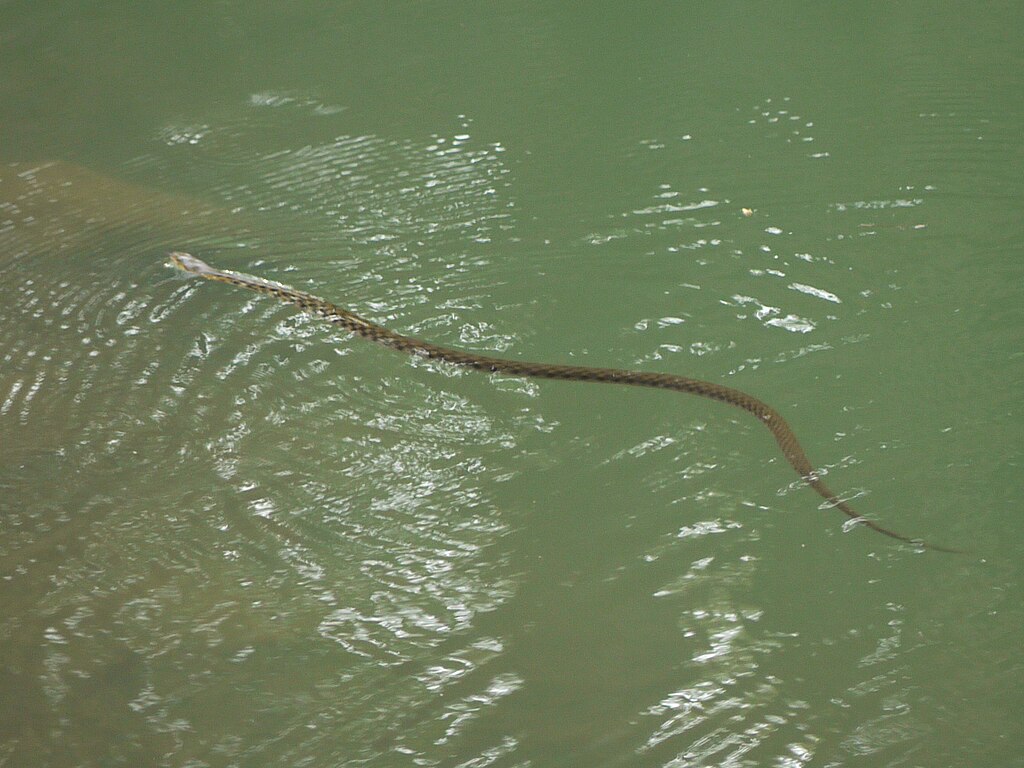
Witnessing a Lake Erie Water Snake shed its skin underwater is a rare spectacle that few researchers have documented in detail. The process begins with the snake displaying typical pre-shedding behaviors: dulled coloration, cloudy blue eyes (called “blue phase”), and reduced activity for several days. When ready to shed, the snake enters shallow water and begins rubbing its snout against submerged rocks or vegetation until the skin splits around the head region. Unlike land snakes that often shed in one continuous piece, the water snake’s shed may separate into multiple fragments as water currents and movement create different tension points along the body. The snake performs exaggerated swimming movements, twisting and contorting its body while using aquatic plants or submerged debris as anchoring points to help pull the old skin away. Throughout this process, the snake periodically surfaces to breathe before continuing its underwater shedding ritual.
Ecological Implications of Aquatic Shedding

The water-based shedding behavior of Lake Erie Water Snakes has interesting ecological implications beyond just the mechanics of skin removal. When these snakes shed in water, the discarded skin fragments become part of the aquatic ecosystem, potentially providing nutrients and organic material for various microorganisms and invertebrates. This contribution to the nutrient cycle differs from terrestrial shedding, where shed skins often remain intact for longer periods. Additionally, the underwater shedding behavior influences the snake’s activity patterns and habitat use, as they must seek out suitable aquatic shedding locations with the right combination of vegetation density and water flow. This specialized behavior also affects predator-prey dynamics, as the snakes may be less vulnerable to certain predators during shedding but potentially more visible to aquatic hunters like large fish or water birds.
Comparing Aquatic and Terrestrial Shedding
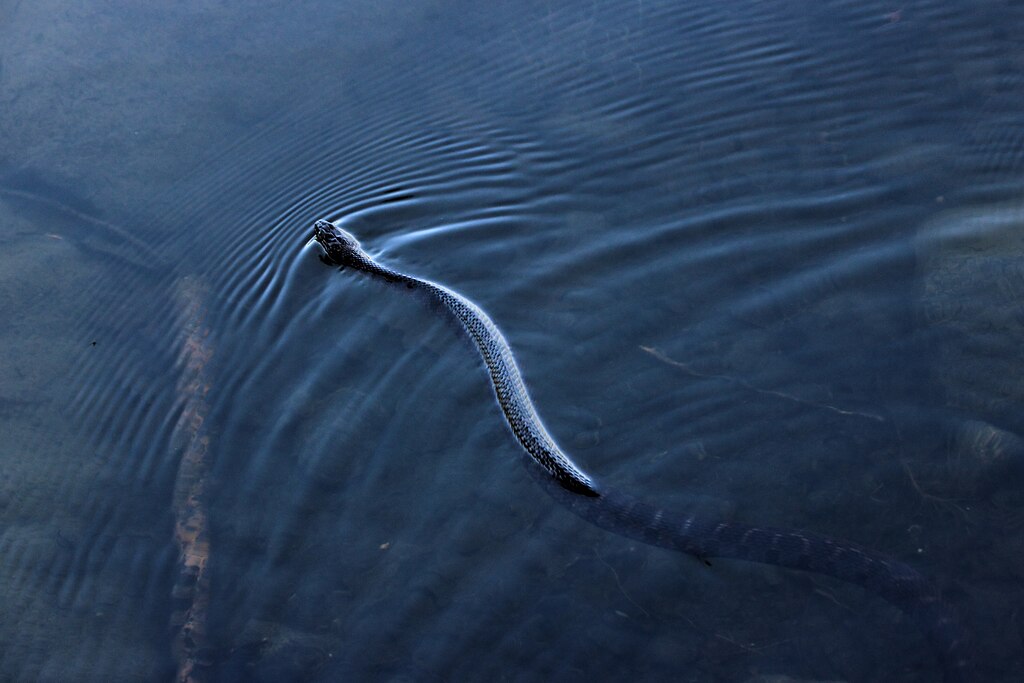
When comparing the Lake Erie Water Snake’s aquatic shedding process to typical terrestrial shedding, several key differences emerge beyond just the environment. Terrestrial snake species typically shed their skin in one complete piece, often referred to as a “snake suit,” while aquatic shedding frequently results in the skin breaking into multiple fragments due to water resistance and movement. The timeline also differs, with land-based shedding generally taking longer as the snake must find suitable friction surfaces and may take breaks during the process. In contrast, water shedding appears to proceed more continuously once initiated, possibly due to the constant moisture and buoyancy assisting the separation. Additionally, terrestrial snakes often reduce their activity and seek shelter during shedding to avoid predators, while Lake Erie Water Snakes remain relatively active in their aquatic environment, using the water itself as a form of protection during this vulnerable period.
Conservation Status and Challenges
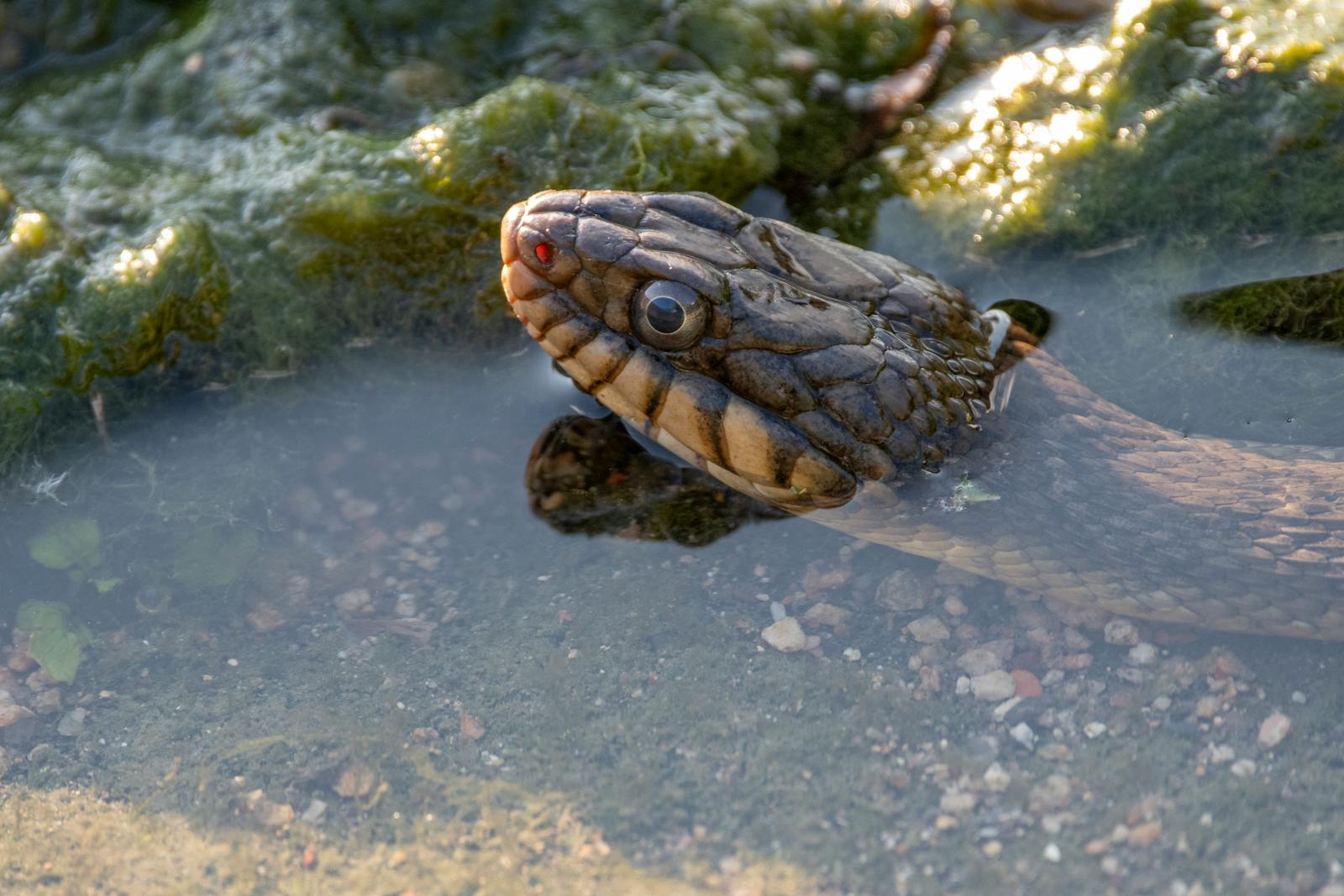
The Lake Erie Water Snake has an inspiring conservation story, having recovered from the brink of extinction to be removed from the federal endangered species list in 2011. Their population decline was primarily driven by habitat destruction and deliberate killing by humans who mistakenly feared these harmless snakes. Conservation efforts focused on habitat protection and public education have allowed their numbers to rebound to over 10,000 individuals across the Lake Erie islands. However, challenges remain for this specialized snake with its unique shedding behavior. Climate change poses potential threats through altered water levels and temperatures in Lake Erie, which could affect the snake’s habitat and prey availability. Continued shoreline development also threatens the rocky coastal areas these snakes require for both hunting and underwater shedding activities. Conservation managers now monitor population levels and continue public outreach to ensure this remarkable reptile maintains its recovery.
Scientific Research and Discoveries

Scientific interest in the Lake Erie Water Snake’s aquatic shedding behavior has led to several fascinating research initiatives that continue to expand our understanding of reptile physiology and adaptation. Biologists have employed underwater cameras and radio tracking to document the entire shedding process in natural settings, revealing previously unknown details about duration, technique, and site selection for aquatic ecdysis. Comparative studies examining the skin composition of these water snakes versus terrestrial relatives have identified subtle differences in scale structure and lipid composition that may facilitate water-based shedding. Recent genetic research explores whether this behavior has a genetic basis or is primarily a learned response to environmental conditions, with preliminary findings suggesting a complex interaction between inherited tendencies and environmental factors. This ongoing research not only illuminates the unique biology of this subspecies but also provides broader insights into how specialized behaviors evolve in response to specific ecological niches.
Cultural Significance and Human Interactions
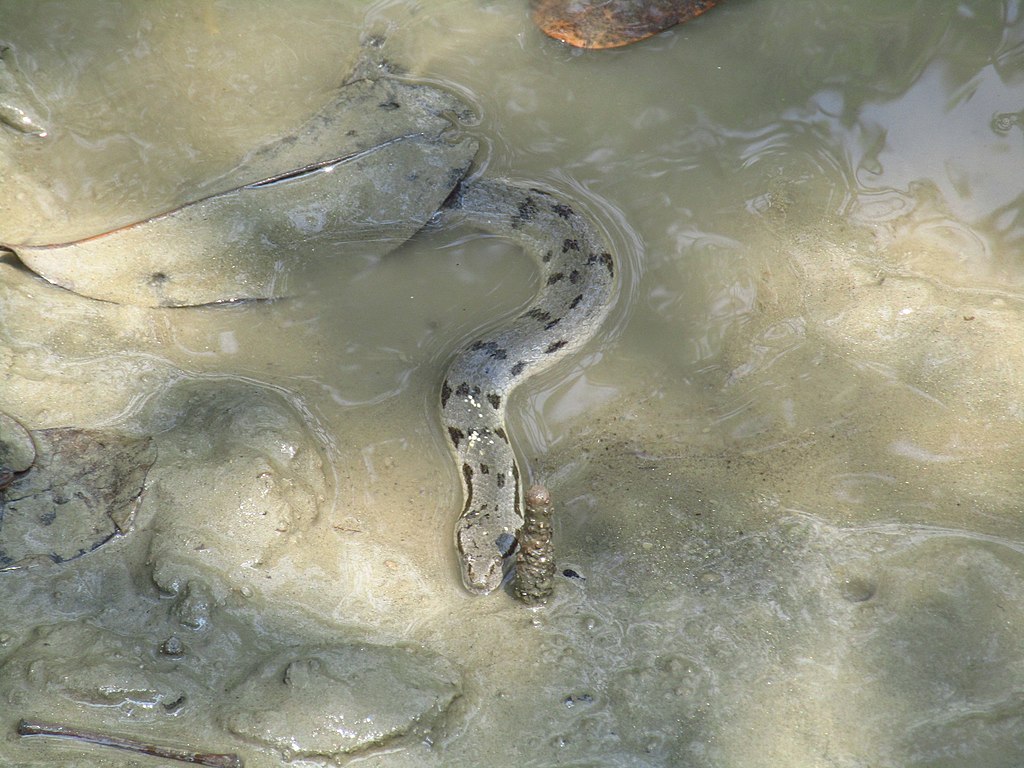
The Lake Erie Water Snake holds a complex place in local culture and history on the Lake Erie islands, where human-snake interactions have evolved significantly over time. Historically, these snakes were persecuted due to unfounded fears and misidentification as venomous species, leading to widespread killing that contributed to their endangered status. Today, they have become unofficial ambassadors for the unique ecology of the Lake Erie islands, featured in educational programs, nature center exhibits, and conservation campaigns. Local tourism has embraced the snake’s remarkable recovery, with guided “snake tours” offering visitors the chance to learn about their unique behaviors, including their water-based shedding. Long-term residents have shared stories of observing these snakes performing their underwater skin-shedding ritual across generations, with these observations becoming part of local natural history knowledge long before formal scientific documentation. This cultural transformation from fear to fascination demonstrates how education can change human perceptions of misunderstood wildlife.
Caring for Water Snakes in Captivity
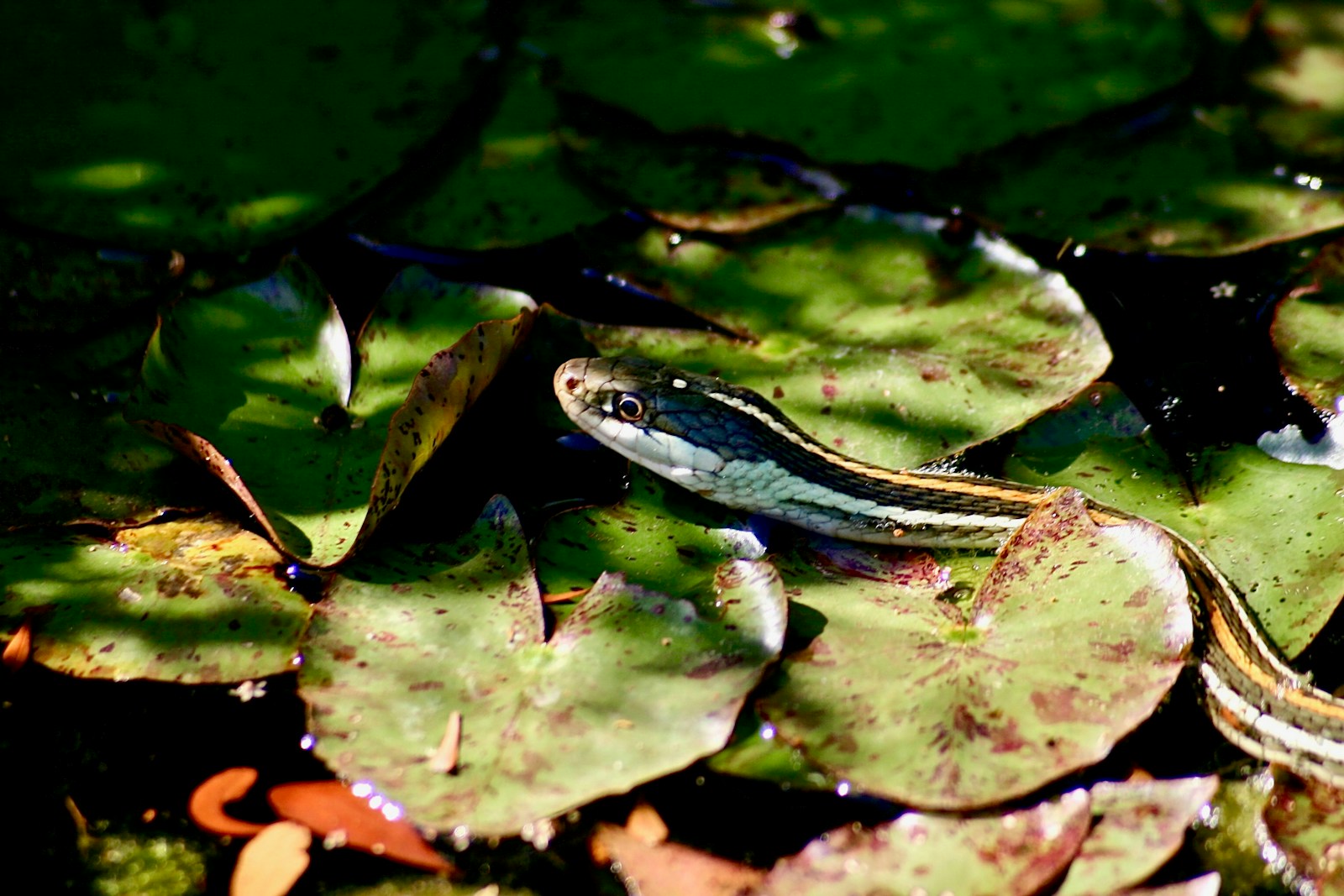
For wildlife rehabilitators who occasionally need to care for injured Lake Erie Water Snakes, recreating conditions that allow for their natural aquatic shedding behavior presents unique challenges. Captive habitats must include both land areas and sufficiently large water features with appropriate substrate and aquatic vegetation to facilitate underwater shedding. Water quality becomes especially important during shedding periods, as poor conditions can lead to skin infections or incomplete sheds that would rarely occur in natural lake environments. Experienced rehabilitators have observed that these snakes show signs of stress when unable to perform their natural shedding behaviors in water, sometimes refusing food or displaying abnormal activity patterns. When housing these specialized snakes temporarily, caretakers monitor pre-shedding signs closely and often increase water depth and add additional aquatic structures just before shedding begins to accommodate their natural behaviors. This specialized care highlights the importance of understanding species-specific adaptations when working with wildlife.
The Future of Aquatic Shedding Research
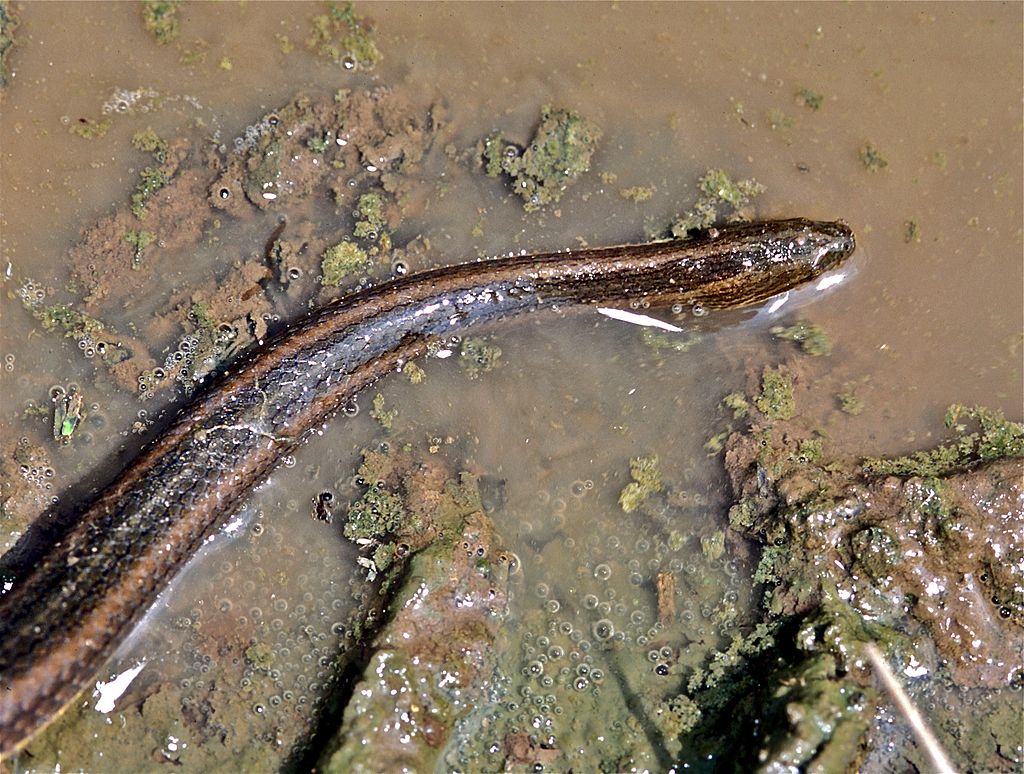
The unique shedding behavior of the Lake Erie Water Snake continues to inspire new research questions and scientific investigations that may have broader implications for understanding reptile evolution. Future studies aim to use advanced biomechanical analysis to measure precisely how water resistance and buoyancy contribute to the mechanics of underwater shedding compared to land-based friction methods. Emerging research is exploring whether climate change and warming lake temperatures might affect shedding frequency or success rates, as reptile metabolism and skin growth are directly influenced by environmental temperatures. Genetic studies are comparing the DNA of Lake Erie Water Snakes with mainland populations to identify potential genetic markers associated with this specialized behavior. Additionally, some researchers are investigating whether other aquatic snake species worldwide might exhibit similar water-based shedding behaviors that have simply gone undocumented, suggesting this adaptation may be more widespread than currently recognized.
Conclusion
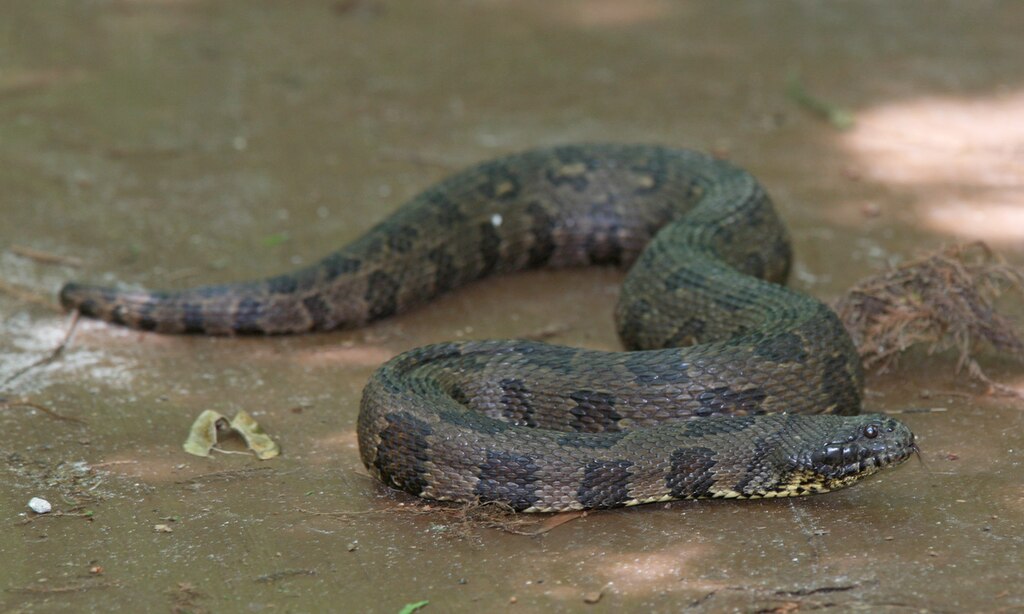
The Lake Erie Water Snake’s remarkable adaptation of shedding its skin underwater represents a perfect example of how animals evolve specialized behaviors to suit their unique environmental circumstances. This seemingly simple modification to a universal reptilian process demonstrates nature’s endless capacity for innovation through natural selection. As one of the few documented cases of aquatic shedding in the snake world, this behavior continues to fascinate herpetologists and nature enthusiasts alike. Through continued research and conservation efforts, we can ensure future generations will have the opportunity to witness this unusual shedding behavior in its natural setting. The story of the Lake Erie Water Snake reminds us that even in familiar animals, extraordinary adaptations may be hiding just beneath the surface, waiting to be discovered and appreciated.

